Omid Kavehei
Stochastic Engrams for Efficient Continual Learning with Binarized Neural Networks
Mar 27, 2025Abstract:The ability to learn continuously in artificial neural networks (ANNs) is often limited by catastrophic forgetting, a phenomenon in which new knowledge becomes dominant. By taking mechanisms of memory encoding in neuroscience (aka. engrams) as inspiration, we propose a novel approach that integrates stochastically-activated engrams as a gating mechanism for metaplastic binarized neural networks (mBNNs). This method leverages the computational efficiency of mBNNs combined with the robustness of probabilistic memory traces to mitigate forgetting and maintain the model's reliability. Previously validated metaplastic optimization techniques have been incorporated to enhance synaptic stability further. Compared to baseline binarized models and benchmark fully connected continual learning approaches, our method is the only strategy capable of reaching average accuracies over 20% in class-incremental scenarios and achieving comparable domain-incremental results to full precision state-of-the-art methods. Furthermore, we achieve a significant reduction in peak GPU and RAM usage, under 5% and 20%, respectively. Our findings demonstrate (A) an improved stability vs. plasticity trade-off, (B) a reduced memory intensiveness, and (C) an enhanced performance in binarized architectures. By uniting principles of neuroscience and efficient computing, we offer new insights into the design of scalable and robust deep learning systems.
Future-Guided Learning: A Predictive Approach To Enhance Time-Series Forecasting
Oct 19, 2024



Abstract:Accurate time-series forecasting is essential across a multitude of scientific and industrial domains, yet deep learning models often struggle with challenges such as capturing long-term dependencies and adapting to drift in data distributions over time. We introduce Future-Guided Learning, an approach that enhances time-series event forecasting through a dynamic feedback mechanism inspired by predictive coding. Our approach involves two models: a detection model that analyzes future data to identify critical events and a forecasting model that predicts these events based on present data. When discrepancies arise between the forecasting and detection models, the forecasting model undergoes more substantial updates, effectively minimizing surprise and adapting to shifts in the data distribution by aligning its predictions with actual future outcomes. This feedback loop, drawing upon principles of predictive coding, enables the forecasting model to dynamically adjust its parameters, improving accuracy by focusing on features that remain relevant despite changes in the underlying data. We validate our method on a variety of tasks such as seizure prediction in biomedical signal analysis and forecasting in dynamical systems, achieving a 40\% increase in the area under the receiver operating characteristic curve (AUC-ROC) and a 10\% reduction in mean absolute error (MAE), respectively. By incorporating a predictive feedback mechanism that adapts to data distribution drift, Future-Guided Learning offers a promising avenue for advancing time-series forecasting with deep learning.
Neonatal Bowel Sound Detection Using Convolutional Neural Network and Laplace Hidden Semi-Markov Model
Aug 17, 2021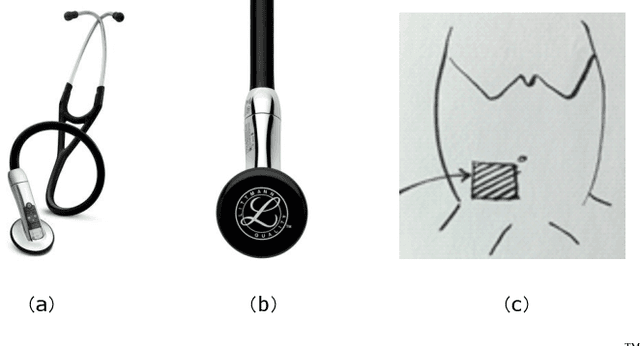
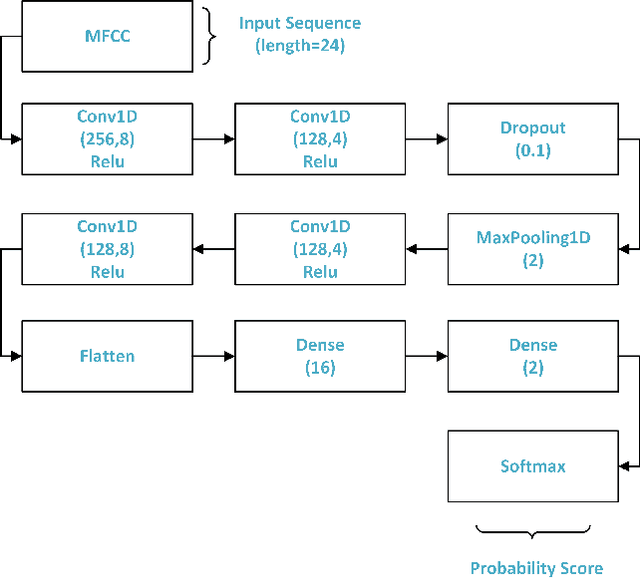
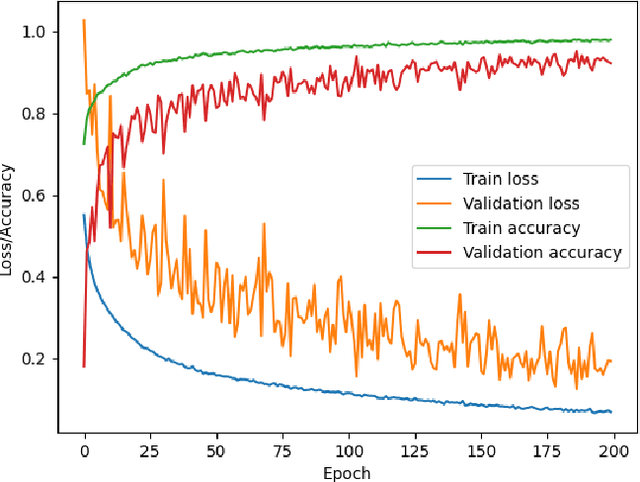
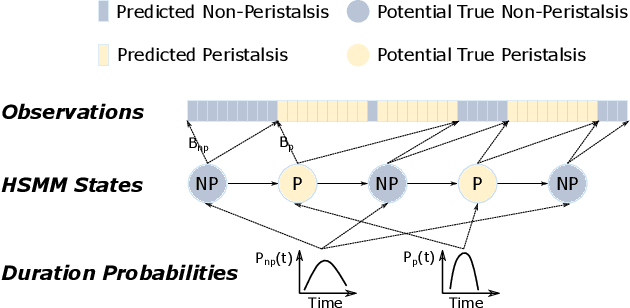
Abstract:Abdominal auscultation is a convenient, safe and inexpensive method to assess bowel conditions, which is essential in neonatal care. It helps early detection of neonatal bowel dysfunctions and allows timely intervention. This paper presents a neonatal bowel sound detection method to assist the auscultation. Specifically, a Convolutional Neural Network (CNN) is proposed to classify peristalsis and non-peristalsis sounds. The classification is then optimized using a Laplace Hidden Semi-Markov Model (HSMM). The proposed method is validated on abdominal sounds from 49 newborn infants admitted to our tertiary Neonatal Intensive Care Unit (NICU). The results show that the method can effectively detect bowel sounds with accuracy and area under curve (AUC) score being 89.81% and 83.96% respectively, outperforming 13 baseline methods. Furthermore, the proposed Laplace HSMM refinement strategy is proven capable to enhance other bowel sound detection models. The outcomes of this work have the potential to facilitate future telehealth applications for neonatal care. The source code of our work can be found at: https://bitbucket.org/chirudeakin/neonatal-bowel-sound-classification/
Prospective Identification of Ictal Electroencephalogram
Mar 03, 2021


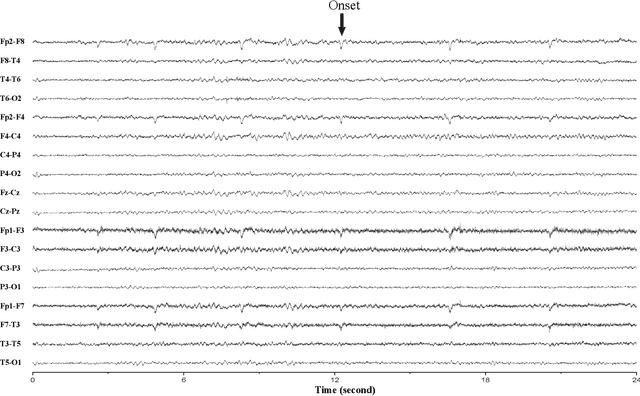
Abstract:A vast majority of epileptic seizure (ictal) detection on electroencephalogram (EEG) data has been retrospective. Therefore, even though some may include many patients and extensive evaluation benchmarking, they all share a heavy reliance on labelled data. This is perhaps the most significant obstacle against the utility of seizure detection systems in clinical settings. In this paper, we present a prospective automatic ictal detection and labelling performed at the level of a human expert (arbiter) and reduces labelling time by more than an order of magnitude. Accurate seizure detection and labelling are still a time-consuming and cumbersome task in epilepsy monitoring units (EMUs) and epilepsy centres, particularly in countries with limited facilities and insufficiently trained human resources. This work implements a convolutional long short-term memory (ConvLSTM) network that is pre-trained and tested on Temple University Hospital (TUH) EEG corpus. It is then deployed prospectively at the Comprehensive Epilepsy Service at the Royal Prince Alfred Hospital (RPAH) in Sydney, Australia, testing nearly 14,590 hours of EEG data across nine years. Our system prospectively labelled RPAH epilepsy ward data and subsequently reviewed by two neurologists and three certified EEG specialists. Our clinical result shows the proposed method achieves a 92.19% detection rate for an average time of 7.62 mins per 24 hrs of recorded 18-channel EEG. A human expert usually requires about 2 hrs of reviewing and labelling per any 24 hrs of recorded EEG and is often assisted by a wide range of auxiliary data such as patient, carer, or nurse inputs. In this prospective analysis, we consider humans' role as an expert arbiter who confirms to reject each alarm raised by our system. We achieved an average of 56 false alarms per 24 hrs.
Epileptic Seizure Classification with Symmetric and Hybrid Bilinear Models
Jan 15, 2020



Abstract:Epilepsy affects nearly 1% of the global population, of which two thirds can be treated by anti-epileptic drugs and a much lower percentage by surgery. Diagnostic procedures for epilepsy and monitoring are highly specialized and labour-intensive. The accuracy of the diagnosis is also complicated by overlapping medical symptoms, varying levels of experience and inter-observer variability among clinical professions. This paper proposes a novel hybrid bilinear deep learning network with an application in the clinical procedures of epilepsy classification diagnosis, where the use of surface electroencephalogram (sEEG) and audiovisual monitoring is standard practice. Hybrid bilinear models based on two types of feature extractors, namely Convolutional Neural Networks (CNNs) and Recurrent Neural Networks (RNNs), are trained using Short-Time Fourier Transform (STFT) of one-second sEEG. In the proposed hybrid models, CNNs extract spatio-temporal patterns, while RNNs focus on the characteristics of temporal dynamics in relatively longer intervals given the same input data. Second-order features, based on interactions between these spatio-temporal features are further explored by bilinear pooling and used for epilepsy classification. Our proposed methods obtain an F1-score of 97.4% on the Temple University Hospital Seizure Corpus and 97.2% on the EPILEPSIAE dataset, comparing favourably to existing benchmarks for sEEG-based seizure type classification. The open-source implementation of this study is available at https://github.com/NeuroSyd/Epileptic-Seizure-Classification
Machine Learning Cryptanalysis of a Quantum Random Number Generator
May 13, 2019



Abstract:Random number generators (RNGs) that are crucial for cryptographic applications have been the subject of adversarial attacks. These attacks exploit environmental information to predict generated random numbers that are supposed to be truly random and unpredictable. Though quantum random number generators (QRNGs) are based on the intrinsic indeterministic nature of quantum properties, the presence of classical noise in the measurement process compromises the integrity of a QRNG. In this paper, we develop a predictive machine learning (ML) analysis to investigate the impact of deterministic classical noise in different stages of an optical continuous variable QRNG. Our ML model successfully detects inherent correlations when the deterministic noise sources are prominent. After appropriate filtering and randomness extraction processes are introduced, our QRNG system, in turn, demonstrates its robustness against ML. We further demonstrate the robustness of our ML approach by applying it to uniformly distributed random numbers from the QRNG and a congruential RNG. Hence, our result shows that ML has potentials in benchmarking the quality of RNG devices.
Semi-supervised Seizure Prediction with Generative Adversarial Networks
Jun 20, 2018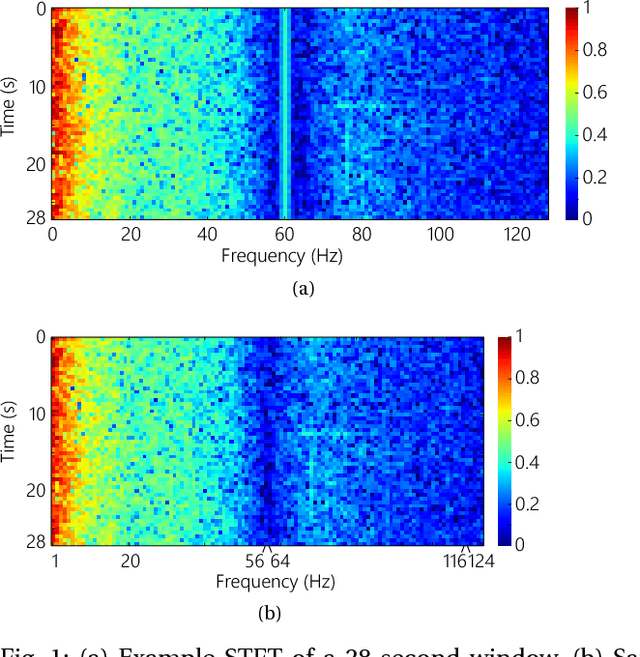
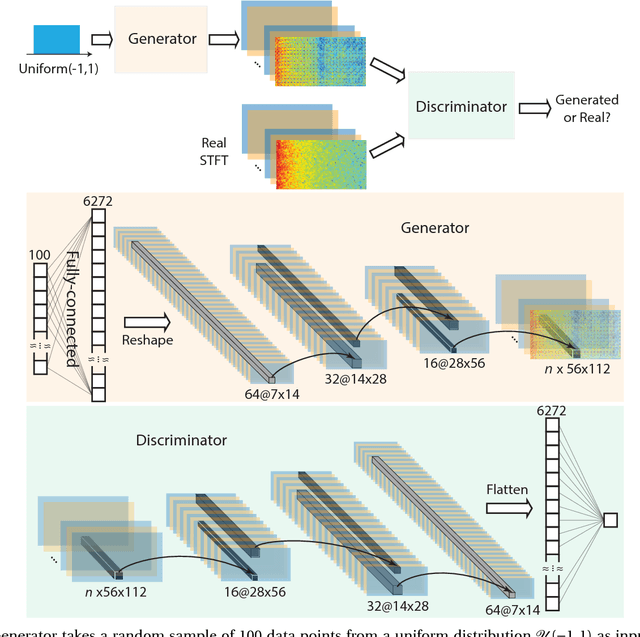


Abstract:In this article, we propose an approach that can make use of not only labeled EEG signals but also the unlabeled ones which is more accessible. We also suggest the use of data fusion to further improve the seizure prediction accuracy. Data fusion in our vision includes EEG signals, cardiogram signals, body temperature and time. We use the short-time Fourier transform on 28-s EEG windows as a pre-processing step. A generative adversarial network (GAN) is trained in an unsupervised manner where information of seizure onset is disregarded. The trained Discriminator of the GAN is then used as feature extractor. Features generated by the feature extractor are classified by two fully-connected layers (can be replaced by any classifier) for the labeled EEG signals. This semi-supervised seizure prediction method achieves area under the operating characteristic curve (AUC) of 77.68% and 75.47% for the CHBMIT scalp EEG dataset and the Freiburg Hospital intracranial EEG dataset, respectively. Unsupervised training without the need of labeling is important because not only it can be performed in real-time during EEG signal recording, but also it does not require feature engineering effort for each patient.
A Generalised Seizure Prediction with Convolutional Neural Networks for Intracranial and Scalp Electroencephalogram Data Analysis
Dec 06, 2017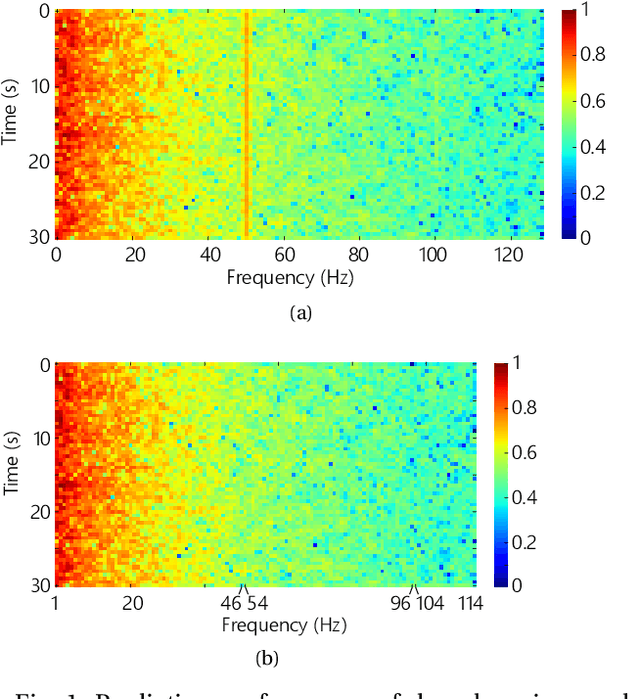
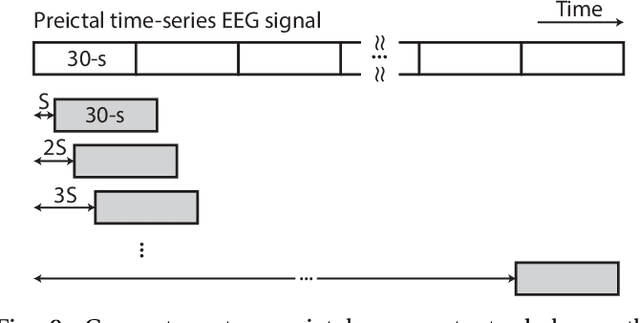
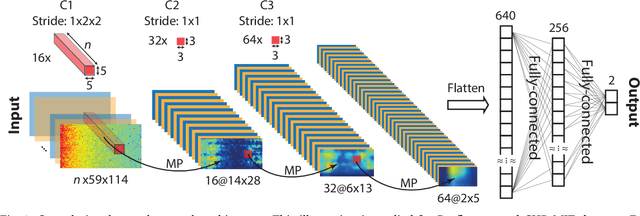
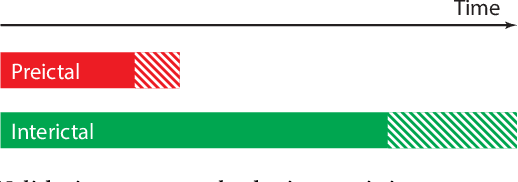
Abstract:Seizure prediction has attracted a growing attention as one of the most challenging predictive data analysis efforts in order to improve the life of patients living with drug-resistant epilepsy and tonic seizures. Many outstanding works have been reporting great results in providing a sensible indirect (warning systems) or direct (interactive neural-stimulation) control over refractory seizures, some of which achieved high performance. However, many works put heavily handcraft feature extraction and/or carefully tailored feature engineering to each patient to achieve very high sensitivity and low false prediction rate for a particular dataset. This limits the benefit of their approaches if a different dataset is used. In this paper we apply Convolutional Neural Networks (CNNs) on different intracranial and scalp electroencephalogram (EEG) datasets and proposed a generalized retrospective and patient-specific seizure prediction method. We use Short-Time Fourier Transform (STFT) on 30-second EEG windows with 50% overlapping to extract information in both frequency and time domains. A standardization step is then applied on STFT components across the whole frequency range to prevent high frequencies features being influenced by those at lower frequencies. A convolutional neural network model is used for both feature extraction and classification to separate preictal segments from interictal ones. The proposed approach achieves sensitivity of 81.4%, 81.2%, 82.3% and false prediction rate (FPR) of 0.06/h, 0.16/h, 0.22/h on Freiburg Hospital intracranial EEG (iEEG) dataset, Children's Hospital of Boston-MIT scalp EEG (sEEG) dataset, and Kaggle American Epilepsy Society Seizure Prediction Challenge's dataset, respectively. Our prediction method is also statistically better than an unspecific random predictor for most of patients in all three datasets.
Supervised Learning in Automatic Channel Selection for Epileptic Seizure Detection
Jan 31, 2017



Abstract:Detecting seizure using brain neuroactivations recorded by intracranial electroencephalogram (iEEG) has been widely used for monitoring, diagnosing, and closed-loop therapy of epileptic patients, however, computational efficiency gains are needed if state-of-the-art methods are to be implemented in implanted devices. We present a novel method for automatic seizure detection based on iEEG data that outperforms current state-of-the-art seizure detection methods in terms of computational efficiency while maintaining the accuracy. The proposed algorithm incorporates an automatic channel selection (ACS) engine as a pre-processing stage to the seizure detection procedure. The ACS engine consists of supervised classifiers which aim to find iEEGchannelswhich contribute the most to a seizure. Seizure detection stage involves feature extraction and classification. Feature extraction is performed in both frequency and time domains where spectral power and correlation between channel pairs are calculated. Random Forest is used in classification of interictal, ictal and early ictal periods of iEEG signals. Seizure detection in this paper is retrospective and patient-specific. iEEG data is accessed via Kaggle, provided by International Epilepsy Electro-physiology Portal. The dataset includes a training set of 6.5 hours of interictal data and 41 minin ictal data and a test set of 9.14 hours. Compared to the state-of-the-art on the same dataset, we achieve 49.4% increase in computational efficiency and 400 mins better in average for detection delay. The proposed model is able to detect a seizure onset at 91.95% sensitivity and 94.05% specificity with a mean detection delay of 2.77 s. The area under the curve (AUC) is 96.44%, that is comparable to the current state-of-the-art with AUC of 96.29%.
 Add to Chrome
Add to Chrome Add to Firefox
Add to Firefox Add to Edge
Add to Edge